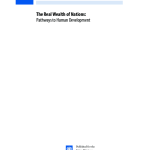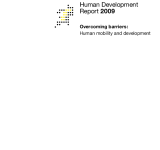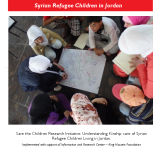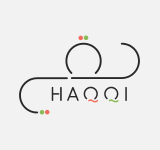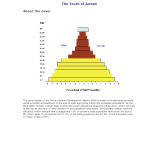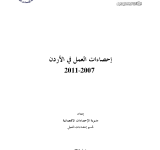education
Migration;; both within and beyond borders;; has become an increasingly prominent theme in domestic and international debates;; and is the topic of the 2009 Human Development Report (HDR09). The starting point is that the global distribution of capabilities is extraordinarily unequal;; and that this is a major driver for movement of people. Migration can expand their choices —in terms of incomes;; accessing services and participation;; for example— but the opportunities open to people vary from those who are best endowed to those with limited skills and assets. These underlying inequalities;; which can be compounded by policy distortions;; is a theme of the report. The report investigates migration in the context of demographic changes and trends in both growth and inequality. It also presents more detailed and nuanced individual;; family and village experiences;; and explores less visible movements typically pursued by disadvantaged groups such as short term and seasonal migration.
his 2005 Human Development Report takes stock of human development;; including progress towards the MDGs. Looking beyond statistics;; it highlights the human costs of missed targets and broken promises. Extreme inequality between countries and within countries is identified as one of the main barriers to human development—and as a powerful brake on accelerated progress towards the MDGs. The report suggests that the world's governments are faced with a choice. They can start a decade for development with the financial resources;; technology and capacity to end poverty or we could have a human development failure. “Business as usual” will not allow fulfilling the promises and the commitments made in 2000. The cost of this failure will be measured in human lives;; increased inequalities;; violations of human rights and threats to peace.
Throughout history water has confronted humanity with some of its greatest challenges. Water is a source of life and a natural resource that sustains our environments and supports livelihoods – but it is also a source of risk and vulnerability. In the early 21st Century;; prospects for human development are threatened by a deepening global water crisis. Debunking the myth that the crisis is the result of scarcity;; this report argues poverty;; power and inequality are at the heart of the problem.The 2006 Human Development Report continues to frame debates on some of the most pressing challenges facing humanity.
This first Jordanian National Human Development Report focuses on the condition and role of young people in the country;; arguing that the capacity of young Jordanians to contribute to national development and to compete in the global economy will determine whether Jordan remains a low middle income country or joins the ranks of the world's advanced economies. The Report looks at young people's lives and aspirations in the three key areas of education;; employment and social integration;; finding for example that 60% of all unemployed people are below that age of 25. The Report concludes that although Jordan has made significant advances in building people's capabilities;; there is room for improvement in aspects of gender-equality;; employment;; income and quality and relevance of education;; and ends with a substantial section on policy recommendations suggesting strategies for addressing this shortfall
Jordan is one of the 88+ countries which carried out national consultations worldwide. 10 countries from the Arab region were selected to run the post-2015 national consultations: Jordan;; Djibouti;; Egypt;; Morocco;; Sudan;; Algeria;; Yemen;; Iraq;; Saudi Arabia;; and Lebanon. The Jordanian national consultations have been a lead contributor to the first preliminary report of the UN Development Group (UNDG) issued in March 2013 and entitled “The Global Conversation Begins – Emerging Views For a New Development Agenda”;; and also to the UNDG Global report “A million voices: The World We Want”;; launched by the UN Secretary-General and UNDG Chair on 9 September 2013. The Global Report constitutes a milestone in the dialogues to shape the post-2015 development agenda. Its findings have contributed to the UN Secretary-General’s report to the 68th session of the General Assembly in September 2013.
يتضمن هذا التقرير النتائج الرئيسية للجولات الأربع للمسح التي تم تنفيذها خلال أشهر شباط;; أيار;; آب;; وتشرين الثاني عام 2007;; بعد أن تم دمج البيانات مع بعضها البعض بتعطي مؤشرات سنوية على مستوى عام 2007. حيث غطت الجولات المسح الأربع عينة من الأسر بلغ حجمها 53 ألف أسرة بصورة تضمن التمثيل على مستوى المملكة والأقاليم والحضر والريف;; والمحافظات. واستندت هذه العينة على الاطار الذي وفرته نتائج التعداد العام للسكان والمساكن لعام 2004. ويشمل التقرير على اﻟﺨﺼﺎﺋﺺ الديموغرافية واﻻﺟﺘﻤﺎﻋﻴﺔ واﻻﻗﺘﺼﺎدﻳﺔ ﻟﻘﻮة العمل;; بالاضافة إلى التعرف على معدلات المشاركة الإقتصادية ومتسوياتها في سوق العمل الأردني;; وكذلك قياس معدلات البطالة وأسبابها حسب المحافظات وخصائص مختلفة كالمستوى التعليمي والحالة الزواجية والعمر.
يقدم هذا التقرير مجموعة من المؤشرات على شكل أرقام ونسب مئوية للقوى العاملة وأبرز الخصائص التعليمية والنشاط الاقتصادي والفئات العمرية والحالة العملية والمهنية ومستوى الرواتب والأجور النقدية المدفوعة وحجم التوظيف وغيرها. وكما يتضمن التقرير مجموعة من الجداول التفصيلية والأشكال البيانية لأهم المؤشرات للفترة الزمنية 2007-2011 وهذا بالاضافة الى كيفية احتساب أهم المؤشرات حسب تعاريف منظمة العمل الدولية.
